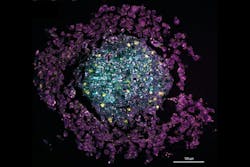Industry asked for handheld deep-ultraviolet sensors to detect chemical warfare agents on the battlefield
ABERDEEN PROVING GROUND, Md. – U.S. Army chemical warfare experts are approaching industry to design and build four state-of-the-art semi-autonomous standoff deep ultraviolet Raman systems to help warfighters detect and avoid chemical threats on the battlefield.
Officials of the Army Contracting Command at Aberdeen Proving Ground, Md., issued a request for information (W911SR-24-S-DUVS) on Wednesday for the Deep Ultraviolet (DUV) Raman Systems project.
The U.S. Army needs the ability to detect large and small quantities of solid and liquid chemicals at distances longer than about seven feet on ground and surfaces to help warfighters detect and avoid chemical hazards.
Army researchers will select a company to build four Raman scattering electro-optical sensors -- the first two that operate at 262 nanometers, and the second two that operate below 250 nanometers.
Raman spectroscopy relies on inelastic scattering of photons called Raman scattering, which uses monochromatic light to measure molecular vibrations, phonons, or other excitations to identify different chemical agents.
The Army Contracting Command issued the request for information on behalf of the Army Combat Capabilities Development Command Chemical Biological Center at Aberdeen Proving Ground, Md.
Army researchers want deep-ultraviolet Raman systems that operate at 262 nanometers or below; provide on-board processing; yield a readable detection of chemical warfare agents, explosives, and drugs; avoid the need of ancillary software or hardware; operate in direct sunlight and at night. The system also must have a standoff range of one meter or more, and weigh no more than 10 pounds.
The project requires a secret facility clearance, and the ability to handle less than 10 grams of explosives and general classes of standard and toxic industrial chemicals and materials.
Companies interested should email responses no later than 30 May 2024 to the Army's Samantha Degele at [email protected] and to the Army's Carlethia Smith at [email protected].
Email questions or concerns to Samantha Degele at [email protected] and to the Army's Carlethia Smith at [email protected]. More information is online at https://sam.gov/opp/0b9b812b4550492b91052b4bd5aa23a6/view.
About the Author
John Keller
Editor-in-Chief
John Keller is the Editor-in-Chief, Military & Aerospace Electronics Magazine--provides extensive coverage and analysis of enabling electronics and optoelectronic technologies in military, space and commercial aviation applications. John has been a member of the Military & Aerospace Electronics staff since 1989 and chief editor since 1995.
